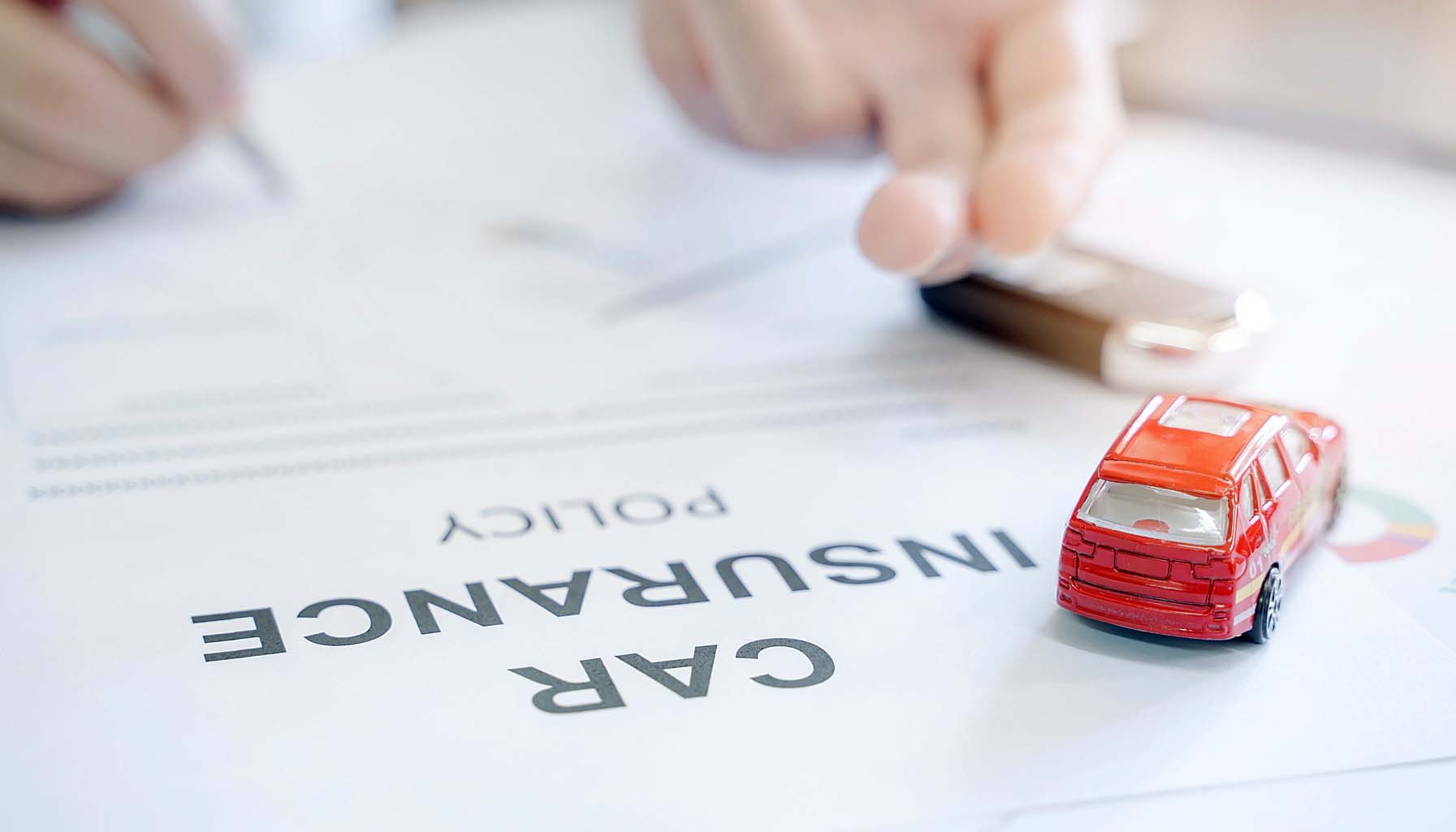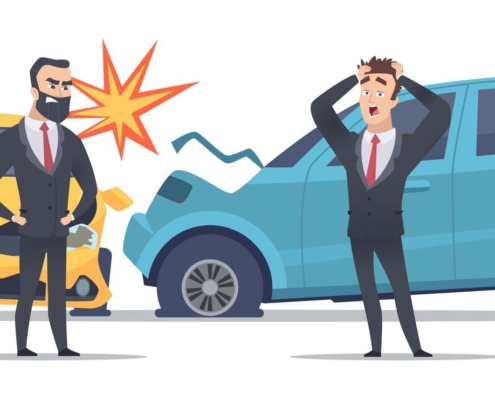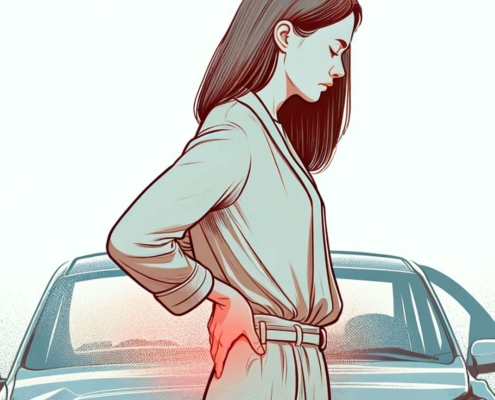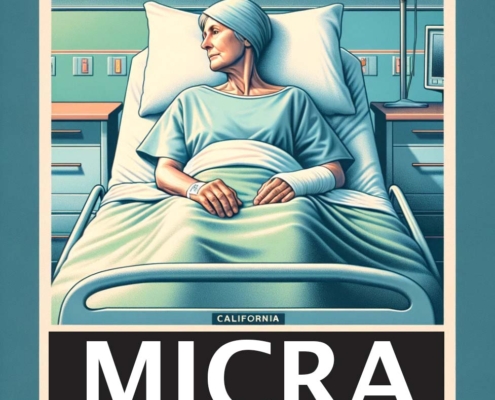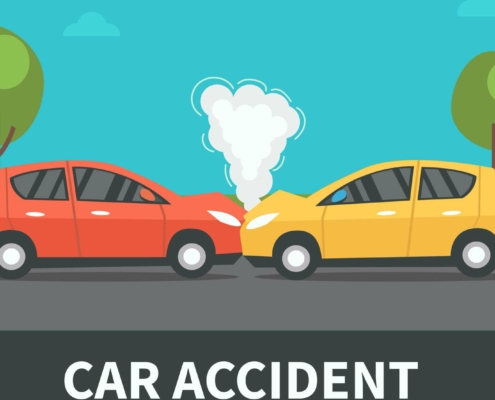At-fault vs. No-fault Accidents
In a no-fault state, your insurance covers your medical bills, whereas, in an at-fault state, the at-fault driver’s bodily injury liability coverage pays for the other driver’s hospital bills.
By Brad Nakase, Attorney
Email | Call (888) 600-8654
Get Smarter: Search my blogs
The terms at fault and no-fault involve the auto insurance payout. When an accident occurs, one party is usually considered “at fault” and must cover the other driver’s and passengers’ injuries. The terms “at-fault” and “no-fault” refer to the way liability for damages and injuries is determined in the event of a car accident. The main difference lies in how the insurance claims and legal proceedings are handled.
In an at-fault state, the driver who is deemed responsible for causing the accident is held responsible, or liable, for the resulting damages and injuries. The at-fault driver’s insurance company typically pays for the damages, medical expenses, and other losses suffered by the other party involved in the accident. The injured party may also have the option to pursue legal action against the at-fault driver to seek additional compensation.
In a no-fault state, by contrast, the concept of fault is somewhat diminished, and each driver involved in an accident is required to seek compensation from their own insurance company, regardless of who caused the accident. Under no-fault insurance systems, drivers are generally required to carry Personal Injury Protection (PIP) coverage, which covers their medical expenses and other related costs, regardless of fault. This approach aims to expedite the claims process and reduce the burden on the court system.
In this article, our San Diego car accident attorney discusses the difference between at-fault and no-fault accidents as follows:
What happens if you are at fault for a car accident in California?
In California, being at fault in a car accident means that you are responsible for causing the collision or contributing significantly to it. If you are at fault in a car accident in California, as the at-fault driver, you will generally be liable for the damages and injuries caused in the accident. This means you may be responsible for paying for the repairs to the other party’s vehicle, their medical expenses, and any other losses resulting from the accident.
You should notify your insurance company about the accident promptly. Your insurance company will investigate the claim and may provide coverage for the damages up to the limits of your policy. It is important to note that California law requires all drivers to carry liability insurance to cover bodily injury and property damage.
The state of California follows a comparative negligence system. This means that even if you are partially at fault for the accident, you can still recover damages from the other party involved. However, your total compensation may be reduced by the percentage of fault assigned to you. For example, if you are found to be 30% at fault, your compensation will be reduced by that percentage.
In some cases, the at-fault driver may face legal consequences if their actions were particularly egregious or involved factors such as intoxication or reckless driving. This could result in fines, license suspension, or even criminal charges.
It is important to consult with a personal injury attorney who specializes in personal injury or car accidents to fully understand your rights and obligations if you are at fault in a car accident in California. They can guide you through the legal process and help protect your interests.
How is fault determined after a California car accident?
In California, fault or liability for a car accident is determined based on the principle of negligence. Negligence is the failure to exercise reasonable care, resulting in harm to others. To determine fault after a car accident, the following factors are considered:
- Police Report: If law enforcement officers respond to the accident scene, they will typically prepare a police report. This report may include their assessment of the accident, statements from involved parties and witnesses, and any citations issued. While the police report does not determine fault conclusively, it can be influential in establishing liability.
- Evidence and Documentation: Evidence gathered at the accident scene, such as photographs, videos, skid marks, or debris, can be valuable in determining fault. Also, medical records, vehicle damage assessments, and eyewitness testimonies may contribute to understanding how the accident occurred and who may be at fault.
- California Vehicle Code: The California Vehicle Code outlines various traffic laws and regulations that drivers must follow. Violating these laws can indicate negligence and may contribute to determining fault. For example, running a red light or speeding can establish liability if it contributed to the accident.
- Comparative Negligence: California follows a system of comparative negligence. This means that fault can be allocated between multiple parties involved in the accident. Each party’s degree of fault is assessed, and their compensation is adjusted accordingly. For instance, if a driver is found 30% at fault, their compensation may be reduced by 30%.
- Insurance Adjusters and Legal Proceedings: Insurance companies play a significant role in assessing fault. Insurance adjusters investigate the accident, review the evidence, and make determinations regarding liability. If a dispute arises or negotiations break down, the parties involved may resort to legal proceedings, where a judge or jury will ultimately determine fault.
It is worth mentioning that fault determination can be complex and may require expert analysis, especially in more complicated accidents. Consulting with a lawyer experienced in car accident cases can provide valuable guidance and representation throughout the process.
Who pays after a car accident in a no-fault state?
In a no-fault state, each party involved in a car accident is responsible for paying for their own medical expenses and certain other losses, regardless of who caused the accident. The primary mechanism for handling these costs is through Personal Injury Protection (PIP) insurance, which is usually legally mandatory in no-fault states.
The following is an overview of how the payment process typically works in a no-fault state:
- Personal Injury Protection (PIP) Insurance: PIP insurance is a type of coverage that drivers are required to carry in no-fault states. It provides benefits to the policyholder, regardless of who is at fault for the accident. PIP insurance covers medical expenses, lost wages, and other related costs resulting from the accident.
- Filing a PIP Claim: After a car accident, each party involved will typically file a claim with their own insurance company under their PIP coverage. The insurance company will process the claim and reimburse the policyholder for their eligible expenses, up to the limits of their policy. This process is generally quicker and avoids the need for determining fault before receiving compensation.
- Thresholds and Limitations: Some no-fault states have thresholds or limitations that determine when a person can step outside of the no-fault system and pursue a claim against the at-fault party. These thresholds are typically based on the severity of injuries or medical expenses exceeding a certain threshold. Once this threshold is surpassed, the injured party may have the option to file a lawsuit or claim against the at-fault driver.
The specifics of PIP insurance and the no-fault system can vary from state to state. The coverage limits, requirements, and exceptions may differ, so it is essential to understand the laws and regulations of the specific no-fault state in question.
Also, it is worth noting that PIP insurance generally covers only economic losses like medical expenses and lost wages. If there are significant damages or injuries exceeding the limits of PIP coverage, or if certain conditions are met, a person may still have the option to pursue a claim against the at-fault party for additional compensation.
What happens if both sides are at fault for an accident?
In California, if both parties involved in a car accident are found to be at fault, the state’s comparative negligence laws come into play. California follows a “pure comparative negligence” system, which means that each party’s degree of fault is assessed, and their recoverable damages are adjusted accordingly.
Let’s take a look at how the comparative negligence system works in California:
- Assessment of Fault: The responsibility for the accident is determined by assessing the negligence of each party involved. This assessment considers factors such as speeding, failure to yield, distracted driving, and other relevant actions or violations.
- Allocation of Fault: The degree of fault is assigned as a percentage to each party involved. For example, one party might be found 60% at fault, while the other party is determined to be 40% at fault.
- Impact on Damages: The comparative negligence system in California allows both parties to recover damages even if they were partially at fault. However, the amount of compensation is adjusted based on the assigned percentage of fault. For instance, if a party is found 40% at fault and the total damages amount to $10,000, their recoverable damages would be reduced by 40% to $6,000.
- Legal Proceedings: In situations where the parties cannot reach a settlement through insurance negotiations, legal proceedings may be initiated. If the case goes to court, a judge or jury will review the evidence, assess the fault, and determine the percentage of fault assigned to each party.
Notably, California’s comparative negligence system allows for partial recovery even if both parties are at fault. However, it is recommended that you consult with an attorney experienced in personal injury and car accident cases to understand the specific implications and potential outcomes based on the unique circumstances of the accident.
Have a quick question? We answered nearly 2000 FAQs.
See all blogs: Business | Corporate | Employment Law
Most recent blogs:
Contact our attorney.


